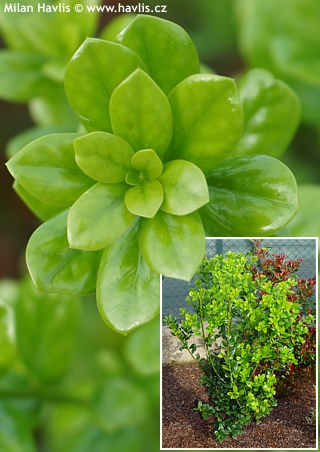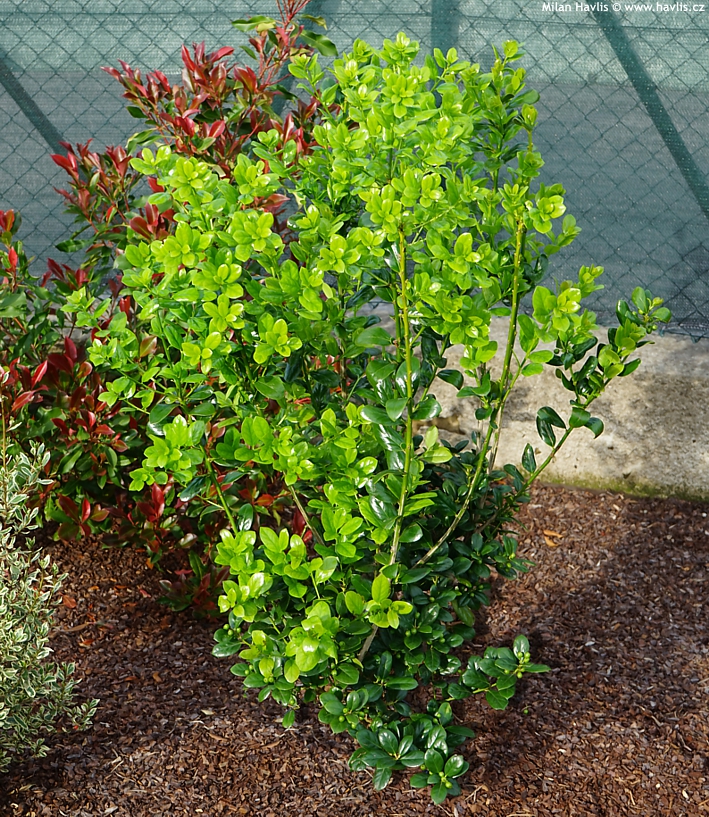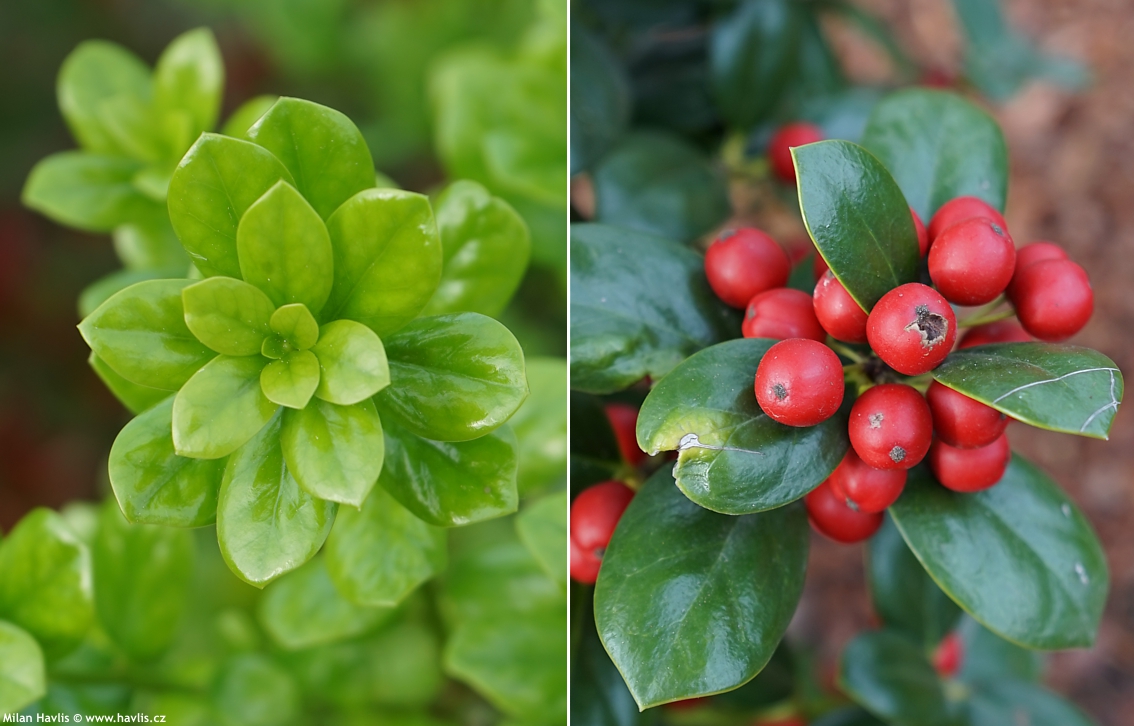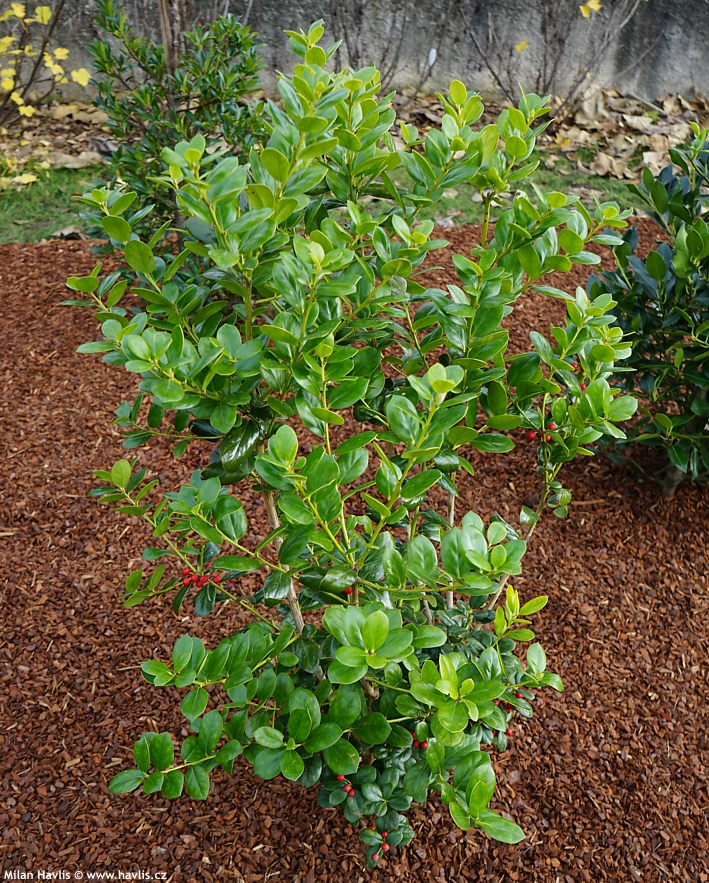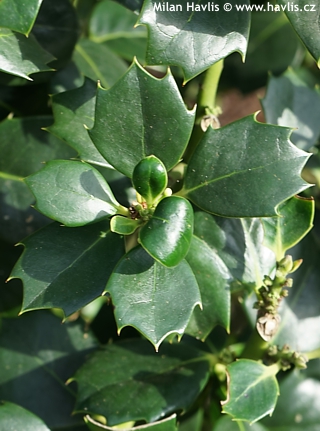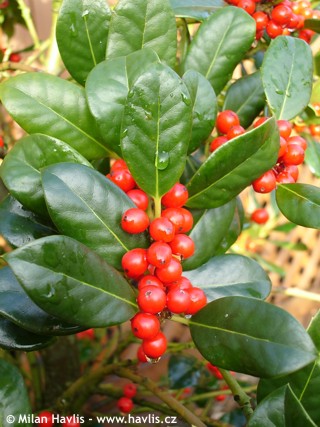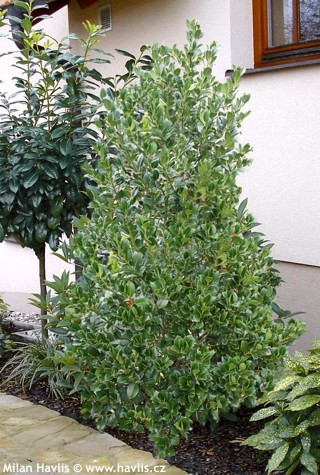Ilex rotunda 'Minzong' RED DOT Kurogane holly - self-fertile
size/type
taller shrub,taller shrub
usual height
3-6m
usual width
2-4m
leaves
evergreen broadleaf
colour of leaves
location
full to partial sun
soil type
acidic (peaty)
soil moisture requirements
evenly moist (dislikes drought)
USDA zone (lowest)
7 (down to -23°C)
winter protection
for zone 5+6

for zone 7

categorized
Ilex
Kurogane holly is an Asian jewel among evergreen hollies. It occupies a large area of native habitat: China, Korea, Taiwan, Vietnam, and Japan where it is a symbol of many municipalities. It also belongs among so-called hibakujumoku species which are plants that survived bombing of Hiroshima and Nagasaki in 1945, and consequent nuclear explosion in the distance of 3 km from the hypocenter. Though their above-ground parts were completely damaged they regenerated from the roots and continued growing. There are 38 species of such in Hiroshima and about 50 in Nagasaki. They are a proof that the strength of human malice is immense but the nature is still stronger. Or as the sceptics say – the human race may wipe themselves out of the Earth’s surface but the planet won’t bat an eyelid.Description of the plant:
RED DOT is one of my most beloved holly varieties. It was born in French nursery Minier and patented in Europe as EU54100 in 2020. It makes handsome foliage than not many other hollies can beat. Its evergreen leaves are 4-6 cm long, leathery, spineless, broadly ovate with a tiny, slightly sharp tip, soft green when they emerge, and only one or two tones darker when mature, and never so deep green as on many other spiny hollies. It is a self-fertile variety producing plenty of vibrant red berries in autumn. They are not edible nor poisonous but contain saponins which cause severe discomfort if eaten. Sometimes, if there are too many berries along a branch there are no leaves at the same part and after the birds have eaten the berries the branch might look bare. No worries – RED DOT grows fast and exhibits excellent branching so new growths will quickly mask it the following spring.
The plant makes about 40 cm per year and grows in upright habit when young, and becomes rounded with age be it a large shrub or a tree. This variety is too young to estimate its ultimate size but in C.E. climate it is expected to grow some 5 m tall in gardens and about 8 m in parks and other areas with unlimited root space. It responds well to pruning – spring pruning enhances branching and midsummer pruning slows down growth and secures a nice shape. It will be a beautiful specimen tree or shrub, and combines well with other large, screening plants in evergreen hedges.
Hollies can take both full sun and deep shade but with less sunlight they will lose their shape. They need very fertile, humus-rich, acidic soil and constant moisture though once established they may take some drought. However, for best results we recommend watering once a month during dry spells. Mulching will also keep the plant moist and will protect its surface roots from quick freezing. Hardiness has not been tested under all conditions yet but is expected about -25°C (USDA zone 6).
Last update 21-11-2020
QUICK PRICE OVERVIEW
CURRENTLY SOLD OUT
WANT TO TRY A SIMILAR PLANT?












